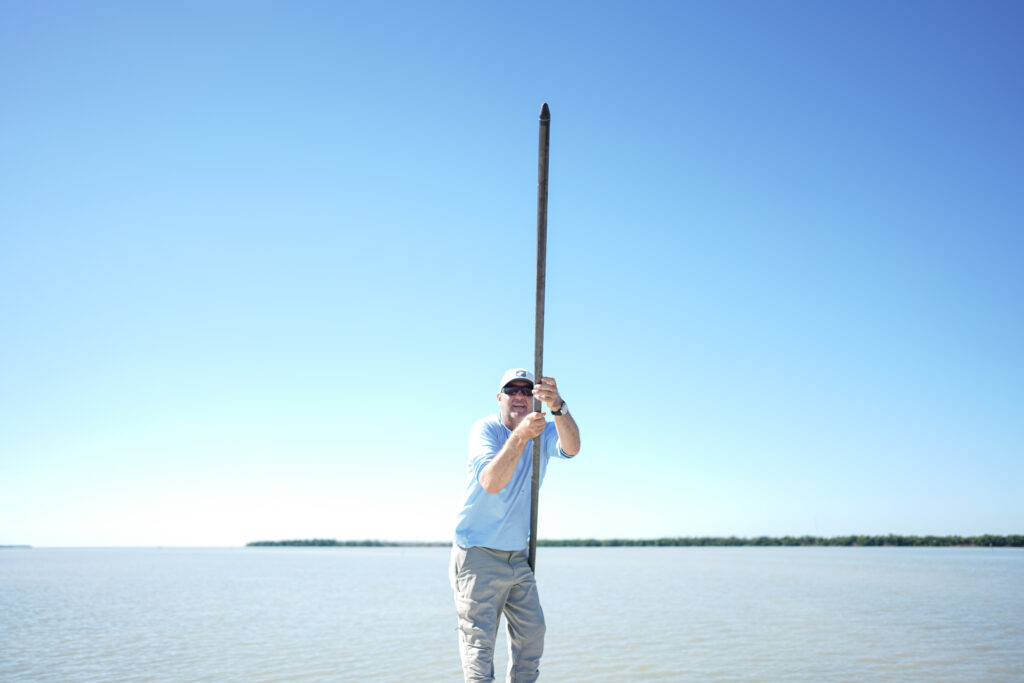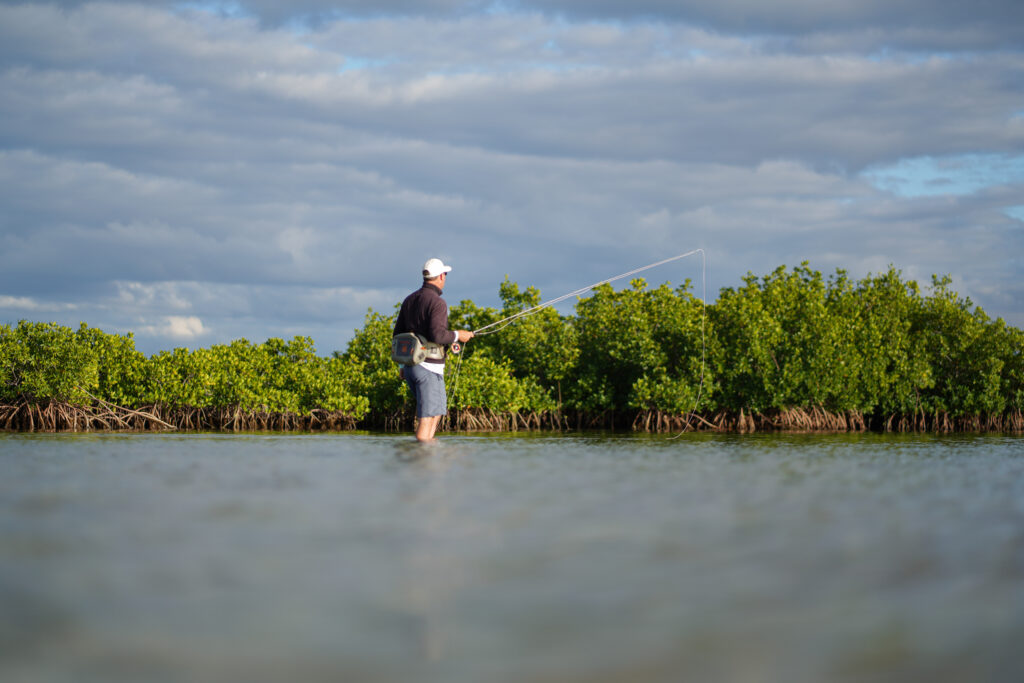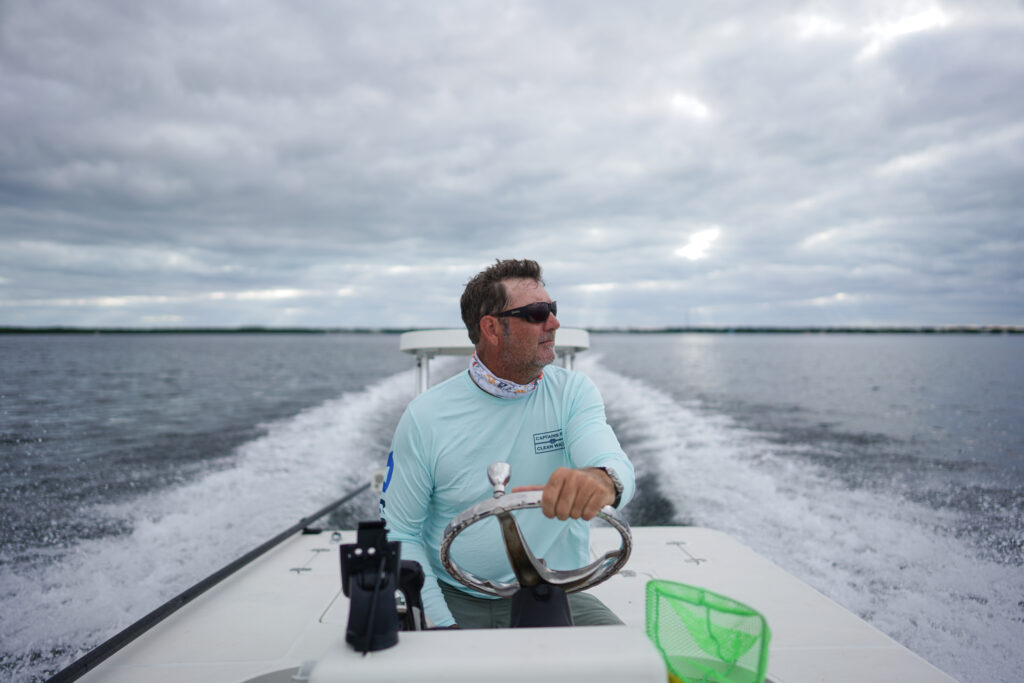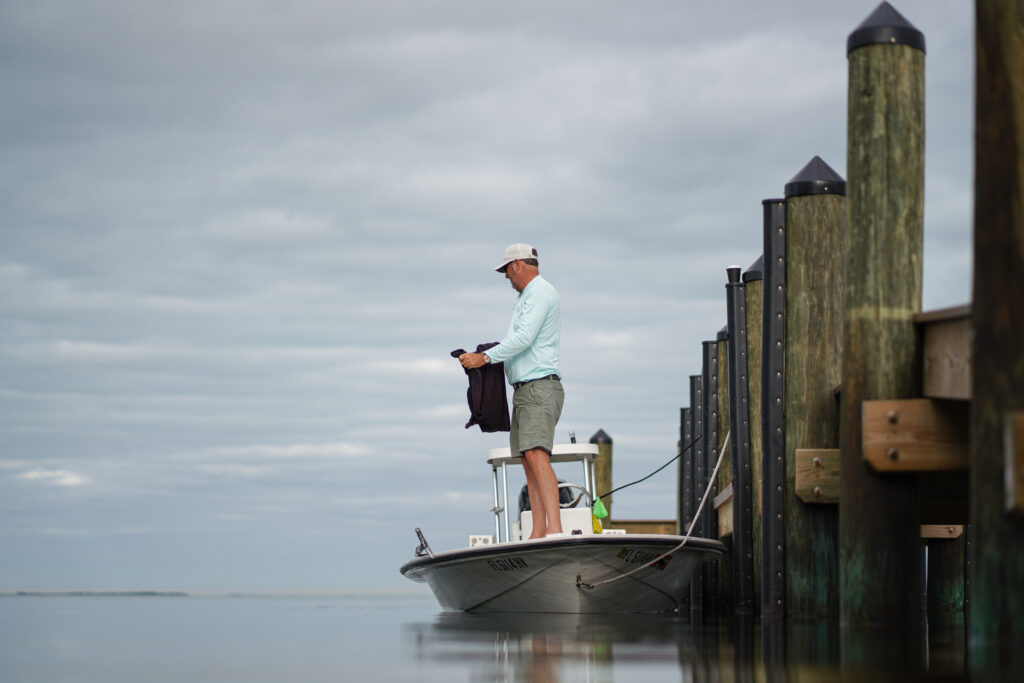Witnessing bonefish tailing in a still cove as the sun starts rising is a sight that will get any angler’s heart racing. The hunt of spot and stalk fishing—along with the incredible visuals and fights—are what draw anglers to fish the flats for bonefish.
The sight of a happily feeding fish tipping up on your stealthily placed fly, inhaling your offering with a happy wiggle of its tail, and taking off on an unstoppable run or two is one of the truly unforgettable moments in angling.
Here are a few tips and rod setup recommendations for fly fishing for bonefish from Douglas Pro John Harrelson.

How to Fly Fish for Bonefish
Fly fishing for bonefish is all about the hunt. A successful day is often measured in shots as much as fish landed. Lower tide phases generally provide fly anglers better opportunities to locate fish as moving water due to changing tides delivers a “lazy Susan” for hungry fish. Shadows, wakes, and even audibly feeding fish are important when hunting for fish. Slicked-out calm, overcast conditions often lead to happily tailing, feeding fish. These fish are on high alert, so methodical fly placement is crucial. Below are a few tips for how to fly fish for bonefish.

How to Spot Bonefish
First off, let’s start with how to fly fish for bonefish. One of the most important components of being successful on the flats is being able to spot the bonefish and determine which direction they are traveling or facing. It is difficult to make a good presentation if you don’t have a target to cast at. Everything starts with locating the fish.
Depending on the conditions and where the sun is in the sky, spotting the fish can be easy or very challenging. Here are a few things to look for when trying to locate fish:
- Nervous water: this is a sign of water being displaced by moving fish. In the shallow water of the flats, it can be easy to see the nervous water. Once you spot it, the next step is to try to figure out if it is a bonefish, shark, or a variety of other potential species.
- Look for tails: tailing bonefish are easy to spot when the water is calm. Look for the sun reflecting off their shiny tails.
- Something that looks out of place: as you’re scanning the flats, look for details that seem off such as odd colors, shadows, etc. A lot of times your eyes pick up fish, but your brain doesn’t register that it’s one. Paying attention to those slight variations in colors and shadows can help you spot more fish.
How to Cast a Fly Rod for Bonefish
The cast is crucial for catching bonefish. Anglers often battle a variety of elements when presenting a fly to a fish. Here are a few tips on how to cast a fly rod for bonefish:
- Being able to double haul is extremely important. There are a variety of resources available to anglers to teach them how to double haul. Booking a casting lesson through your local fly shop is a great way to learn. YouTube videos are also a great resource as long as you commit to practicing.
- Shorter (40’) casts that are consistently accurate are much more important than trying to dump your whole line at a fish 80’ out, especially when fishing from a boat. If you’re wade fishing, you’ll be able to sneak in a little closer. Practice being accurate at distances within 40’.
- When the wind is blowing, avoid a vertical rod when casting. Try angling your rod into the wind to keep your loops from getting blown shut. Windier days mean you can get closer to the fish; however, a double haul is still vital to present the fly.
- Practice shooting your line with minimal false casting. These fish move and are very spooky – on calm days fish need to be finessed quickly. Three false casts are often too many – stop your rod tip as high as possible and let the fly settle. Remember— a long slow strip may be necessary to get tight (take out slack) to the fly.
- When fish are tailing, the fly must be gently placed in range of the fish. This range varies greatly depending on wind, fly weight, and available light. Short accurate casts are much better than long, random casts. Once the fly has landed, it’s best to wait for the fish to get relatively near the fly before stripping it. Fish the fly too soon, and the fish may never catch up to it. Multiple fish may be more aggressive than singles and doubles because they create competition — once one fish charges the fly, odds are the others will too.

How to Rig a Fly Rod for Bonefish
Rigging a rod for bonefish is relatively straight forward. Here’s what you’ll need:
- Plenty of 20 lb. backing, 150 yds. (+) will do the trick.
- Using an Albright knot, connect the backing to the saltwater fly line (you can also use the loop-to-loop connection if applicable).
- A large arbor reel is the best choice as these fish smoke the line. The larger arbor makes it easier to reel in any slack from fish swimming straight at you.
- A store bought tapered mono leader, 9 ft-12 ft. in length is perfect, with a trace of about a foot to a foot and a half of thinner tippet, is a good way to go. The tippet will extend the life of the leader. On windier days a shorter, slightly stouter tippet can make a big difference getting the fly in front of the fish. Remember, they don’t eat the fly if they can’t see it.
- Tie the fly to the leader/tippet using a loop knot. A few favorite flies for bonefish include:
- Gotchas
- Spawning Shrimp
- Mantis Shrimp

Best Fly Rod for Bonefish
The best fly rod to use for bonefish will depend on the conditions you’re fishing in. Windier conditions call for heavier weight rods while calmer conditions call for lighter, more finesse rods. Regardless of the conditions, the best fly rod for bonefish includes characteristics such as:
- Fast-action
- Powerful
- Accurate
If you’re using a lighter, more finesse rod, it will still need to deliver the fly at a variety of distances with minimal false casts. So, it will still need to be powerful, accurate, and fast-action.
Douglas offers a variety fly rods that fit the bill for bonefish. Our award-winning SKY G fly rod series are the perfect rods for the flats. Powerful, accurate, and able to delicately deliver a fly at a variety of distances. We recommend the following Douglas SKY G fly rods:
What Weight Fly Rod for Bonefish
6wt to 9wt fly rods all serve a purpose when fishing for bonefish. You might hedge your bets with a slightly heavier rod. Calm days call for a 7wt in the Keys. Bigger flies and heavier wind require heavier rods to throw them— this is where the 8wt excels.
Longer casts are necessary when fishing from a skiff. An 8wt is a great workhorse if you only have one rod. A 7wt and 9w rigged with different depth (weight) and profile shrimp & crab flies are great to have set up as retying or relining can be the curse of death in a rapidly changing environment like overcast windy days. If you’re interested in targeting a variety of species, a 9wt is ideal for snook, redfish, permit, barracuda, and baby tarpon. A 6wt can be a hoot if the fish are generally small and the winds are lighter but be prepared to be haunted by the classic “one that got away” scenario.

Fly Fishing for Bonefish in the Keys
I will share some of my experiences fishing for these highly coveted and very exasperating fish here in the Florida Keys. The Keys are the birthplace of this style of fishing and home to some of the biggest, oldest, and wisest bonefish in the world. A casual, underprepared approach usually proves unsuccessful here as there are generally fewer fish than most other destinations.
Most anglers are focused on sight fishing these silver missiles. The addition of a pair of eyeballs (a guide) can make the learning curve much less steep. In boat based (non-wading) fisheries a guide is crucial. A poled skiff allows the angler to cover much more water. Wading anglers are able to get closer to feeding and tailing fish.
A guide will also know the best tides, the most effective flies, and how to work the flies to get a positive response from the fish. A captain will also be able to aid in rigging, as specific knots are important to achieve maximum success.

Getting on the Water with Pro Guide John Harrelson
John Harrelson is a lifelong angler and captain based in the upper Keys and Everglades for the past 15 years. He has been fortunate enough to guide in Alaska, Chile, and the Rockies. John loves to watch anglers grow to love shallow saltwater fishing as much as he does. The sight of a tailing Bonefish on a slicked-out flat is a sight not to be forgotten.
To book a day with John, please visit his website here or reach out to him via email
